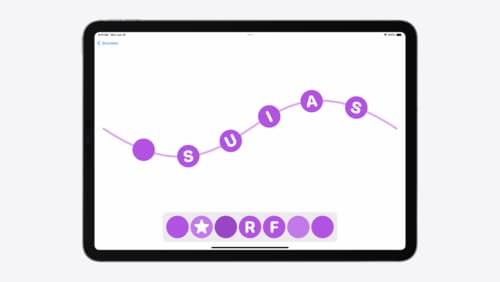Explícame con detalle y profundidad de qué trata TCA en swift
Asked on 2024-09-06
1 search
TCA, or The Composable Architecture, is a library for building applications in a consistent and understandable way, with a focus on composition, testing, and ergonomics. While the context provided does not specifically mention TCA, it does cover various aspects of Swift, including concurrency, protocols, and extensibility, which are relevant to understanding how TCA can be implemented in Swift.
Key Concepts Related to TCA in Swift:
-
Concurrency: Swift's concurrency model, which includes tasks, async/await, and actors, is crucial for managing state and side effects in a TCA-based application. Understanding these concepts can help in structuring applications that are responsive and maintainable. For more on concurrency, you can refer to the session A Swift Tour: Explore Swift’s features and design.
-
Protocols and Generics: TCA heavily relies on Swift's protocol-oriented programming and generics to create reusable and composable components. This allows developers to define clear interfaces and leverage Swift's type system to ensure correctness.
-
Data-Race Safety: Swift 6 introduces features to help protect against data races, which is important when dealing with state management in TCA. The session Migrate your app to Swift 6 discusses data-race safety and concurrency features that are relevant when implementing TCA.
-
Extensibility: Swift's extensibility features, such as property wrappers, can be used to reduce boilerplate and enhance the expressiveness of TCA components. These features are discussed in the session A Swift Tour: Explore Swift’s features and design.
If you are interested in learning more about TCA specifically, I recommend looking into resources and documentation provided by the creators of TCA, as well as exploring Swift's concurrency and protocol features, which are foundational to implementing TCA effectively.

Migrate your TVML app to SwiftUI
SwiftUI helps you build great apps on all Apple platforms and is the preferred toolkit for bringing your content into the living room with tvOS 18. Learn how to use SwiftUI to create familiar layouts and controls from TVMLKit, and get tips and best practices.

Migrate your app to Swift 6
Experience Swift 6 migration in action as we update an existing sample app. Learn how to migrate incrementally, module by module, and how the compiler helps you identify code that’s at risk of data races. Discover different techniques for ensuring clear isolation boundaries and eliminating concurrent access to shared mutable state.

Enhance your UI animations and transitions
Explore how to adopt the zoom transition in navigation and presentations to increase the sense of continuity in your app, and learn how to animate UIKit views with SwiftUI animations to make it easier to build animations that feel continuous.
